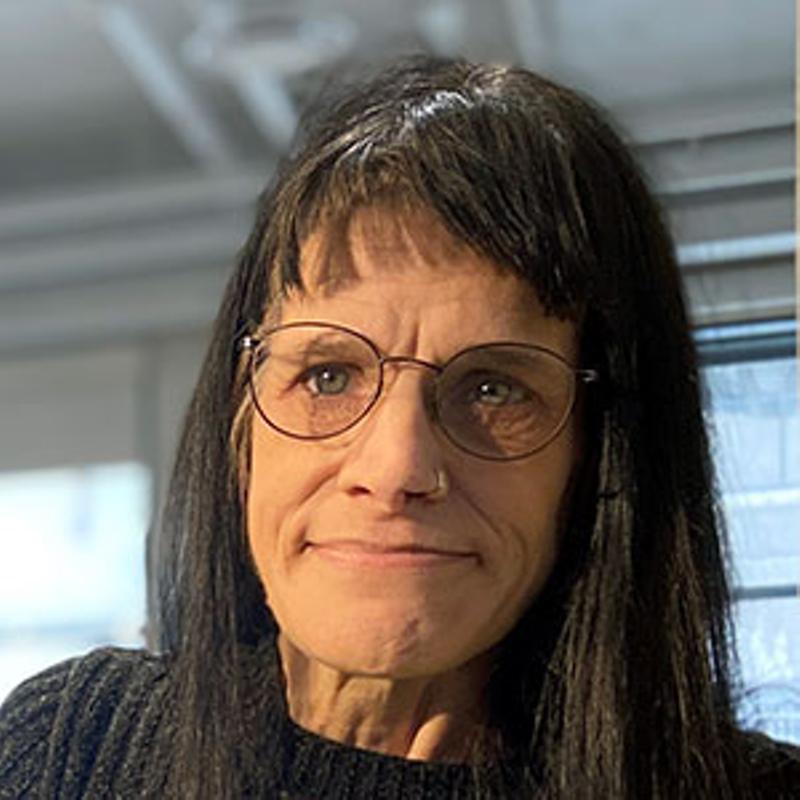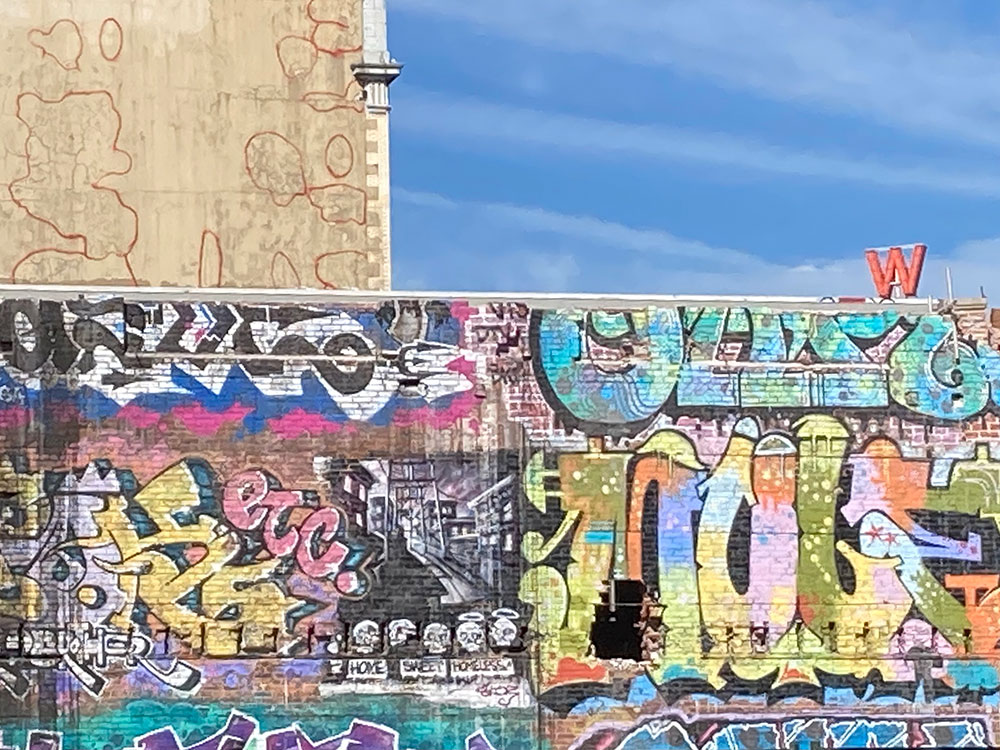[Editor’s note: Life in the Downtown Eastside has been intense this summer. Fire, violence and displacement have been prominent in the neighbourhood over the last few months. In addition to the ongoing work of our staff reporters covering the neighbourhood, we’re keen to see what’s happening through the eyes of local residents.
Yesterday, we published a piece by Nicolas Crier. Today, we’re publishing a piece by Julie Chapman, who for nine years was on the board of Sex Workers United Against Violence and joined Crier as one of the inaugural recipients of the Megaphone and Read Mercer Entrance Award at Langara College this past school year.]
My name is Julie Chapman and I am a student journalist. I use she/her pronouns. I was born and raised in Vancouver. I grew up in the Kitsilano area and I graduated from Kitsilano high school.
I have been living, volunteering, working and playing in Vancouver's Downtown Eastside for over 20 years. Thirteen of those years I have been living in Woodwards social housing on Hastings Street between Abbott and Cambie. Prior to moving into Woodwards, I was one of the “Woodsquatters” standing up for the rights of our community members by advocating for low-income housing to be built on Woodwards' property.
For the past 10 years, I have been using a mobility scooter to get around. Being a woman in the DTES and having mobility issues, it is always a concern that I maintain my health and safety.
When I leave Woodwards, I don't have to go far before I’m in the middle of the street scene. By that I mean tents, makeshift shelters, people who are trying to sell their personal items for cash, street-level drug dealers and people who are just hanging out on the streets. Over the last several months, I’ve noticed that there is more tension in the air than usual. People are quicker to lose their patience and tempers over what seem like trivial things.
When I am out in the neighbourhood I see people who look like they are having hard times and struggling. Not having safe, clean and affordable housing available, or not having enough of it — that, in my opinion, is the root of many of the issues people are currently facing in the DTES.
What it’s like to live on the streets
When I was homeless for four years, I was lucky to meet a friend who was homeless by choice and offered to stay with me and watch my back. Being alone on the streets is dangerous, especially if you are a single woman. At the time my friend and I would keep our blankets and other personal belongings in a shopping cart outside of a drop-in centre we would use to get cheap, hot meals, a hot shower and laundry.
After the centre was closed for the night, my friend would get all our bedding and blankets out and set them up at the top of the wheelchair ramp in a corner where there were extra walls keeping us sheltered from the weather. He used layers of cardboard as the base to help insulate us from the cold ground. He used the blankets to make the bed more comfortable.
First thing in the morning, we would have to be up and have all our bedding and blankets put away and the space clean and ready for members of the centre to use again. It was hard, doing that every day.
More youth in the neighbourhood
I have noticed over the past year or so that there have been younger kids showing up in the DTES. Some of the youth look like they are 14 or 15 years old at the most.
It makes me wonder how these youth are ending up down here. I feel that part of the reason they are out on the streets is because the last youth detox centre in Vancouver closed its doors permanently in May 2022.
There is going to be a new system or model that is going to be more opioid disorder friendly. However, there is going to be at least a six-month wait before the new youth detox spaces are accessible and running. How many youth who are at risk are going to be sacrificed during this gap in time?
One is too many. Those youth are our future of what is to come. Helping them when they're young and can still be part of positive change is important and necessary.
There has always been friction between the DTES community and the Vancouver Police Department. Earlier this month, a “standoff” at the Carnegie Community Centre triggered more distrust and anxiety towards the VPD from community members. There have been many cases of police brutality that have involved DTES community members.
Having the fear of violence and seeing the uneasiness that my community has whenever there are police present in our neighbourhood is not beneficial to anyone. It appears to me like the police are using the community’s apprehensions as a weapon to try to be controlling. There seems to be a lack of compassion from the VPD towards anyone they have interactions with in the DTES.
No belonging, no supports
The compounding tragedies of residential schools, the ongoing overdose crisis, individual personal traumas and the housing crisis have resulted in many people feeling displaced and not having positive support or housing.
Finding housing that is going to be suitable for each person is difficult. One individual may need a residence that has more supportive services, while someone else may be better suited for a more independent type of living arrangement. Even if everyone from the Hastings tent city gets housed, it’s not necessarily going to be the best place for that individual. But at least it's a starting point. They won't be on the streets anymore and they will be able to use the resources and get assistance in finding better suited housing for them.
No matter how I look at it, the fact of the matter is we are lacking housing in the DTES. There are buildings that sit unoccupied that could house many. For example, there is a big, empty building on the corner of Gore and Hastings. There needs to be an immediate recommendation made by politicians that the city start building housing that is going to be available as soon as possible, not in two, three or more years from now.
I also feel that stigma is still hampering how individuals are treated and judged. They say you have to walk a mile in someone else's shoes to know how they truly feel — so why not be compassionate, patient and understanding to everyone?
If people tried changing how they look at people and not judge them by their appearance, their mental health complexities, their past, then maybe we could make this world and city a better place to live. ![]()
Read more: Rights + Justice, Housing, Municipal Politics
















Tyee Commenting Guidelines
Comments that violate guidelines risk being deleted, and violations may result in a temporary or permanent user ban. Maintain the spirit of good conversation to stay in the discussion.
*Please note The Tyee is not a forum for spreading misinformation about COVID-19, denying its existence or minimizing its risk to public health.
Do:
Do not: